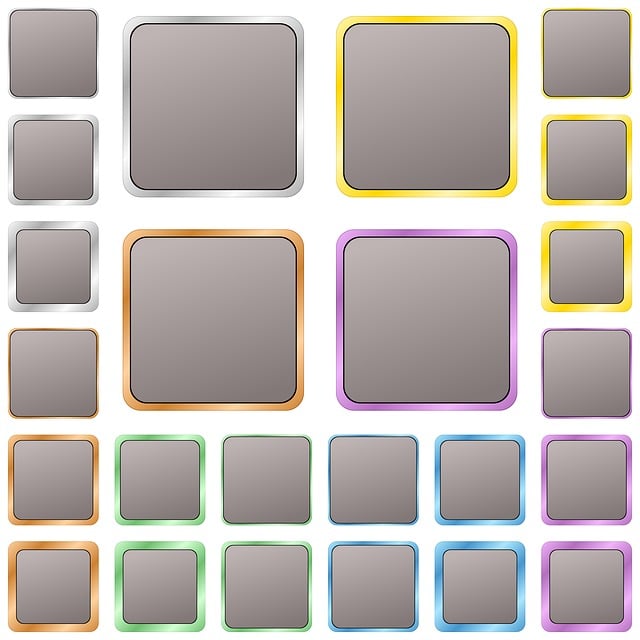UI/UX design transforms digital products by merging aesthetically pleasing interfaces with easy-to-use functionality. UI designers focus on visual aesthetics and user interactions, while UX designers understand user needs and create intuitive flows. Skilled designers balance aesthetics and usability to build engaging experiences, leveraging trends like minimalism and interactive elements. Usability testing optimizes these interfaces based on real-user feedback. Investing in high-quality UI/UX design services enhances user experience, encourages engagement, and drives business success by fostering brand credibility and stronger customer relationships.
“Unleash the power of exceptional user experiences with our comprehensive guide to UI/UX design services. We delve into every facet of this dynamic field, from grasping the fundamentals of UI/UX and its designers’ role in crafting digital landscapes, to exploring the intricate UX process, visually stunning interfaces, and usability testing.
Discover trending practices, unlock benefits of high-quality design, and learn how to select the perfect agency for your project, ensuring a seamless and engaging user journey.”
Understanding UI/UX Design: A Fundamental Overview

UI/UX design is a dynamic and collaborative process that shapes the user experience with digital products. At its core, User Interface (UI) design involves crafting visually appealing and intuitive interfaces, while User Experience (UX) design ensures these interfaces are easy to use and deliver meaningful experiences for users. A strong UI/UX design not only enhances aesthetics but also leverages psychology, usability testing, and data-driven insights to create seamless interactions.
Effective UI design focuses on clean layouts, clear hierarchies, and thoughtful visual elements that guide users through an application or website. UX design, on the other hand, involves understanding user needs, creating user flows, and optimizing interfaces based on extensive research and feedback. By integrating these two disciplines, businesses can develop digital solutions that not only captivate users but also offer intuitive, efficient, and enjoyable experiences.
The Role of UI Designer in Shaping Digital Experiences

UI designers play a pivotal role in shaping digital experiences, focusing on the visual aspects and user interactions of websites and applications. They are responsible for creating intuitive and aesthetically pleasing interfaces that cater to users’ needs and preferences. A UI designer’s expertise lies in balancing functionality, usability, and visual appeal, ensuring every element on the screen serves a purpose and enhances the overall user journey.
By employing a combination of color theory, typography, and layout principles, UI designers craft interfaces that engage and delight users. They collaborate closely with UX designers to translate wireframes and prototypes into full-fledged digital products, ensuring a seamless fusion of form and function. The intricate work of UI designers directly influences how users interact with and perceive a brand, making their role indispensable in the realm of modern digital design.
UX Design Process: From Research to Implementation

The UX (User Experience) Design Process is a systematic approach that transforms user needs into intuitive and engaging interfaces. It begins with thorough research to understand target audiences, their behaviors, and pain points. This involves conducting user interviews, creating buyer personas, and mapping user journeys to gain insights.
With these insights, designers define information architecture, wireframing, and prototyping to visualize the UI (User Interface) structure and flow. The design team iteratively refines these prototypes, incorporating feedback from users and stakeholders. This iterative process ensures that the final UI design not only looks appealing but also offers a seamless and enjoyable user experience, catering to the needs and preferences of the target audience.
Creating Visually Appealing and User-Friendly Interfaces

In the realm of UI/UX design, crafting visually appealing and user-friendly interfaces is paramount to ensuring digital products resonate with their target audience. Skilled designers employ aesthetics and usability as guiding principles, transforming raw ideas into intuitive, engaging experiences. The visual aspect, guided by UI design principles, plays a crucial role in drawing users in while maintaining consistency and readability across various platforms and devices.
By balancing form and function seamlessly, interfaces become more than just visually pleasing—they become extensions of user personalities, fostering interactions that are both satisfying and efficient. This attention to detail not only enhances user experience but also drives engagement, making the interface a true game-changer in today’s competitive digital landscape.
Usability Testing: Ensuring Optimal User Experience

Usability testing is a critical component of UI/UX design services, as it directly contributes to ensuring an optimal user experience. By gathering real users’ feedback and observing their interactions with the interface, designers can identify pain points, understand user preferences, and make data-driven improvements. This iterative process helps in creating intuitive, accessible, and enjoyable interfaces that cater to the needs of the target audience.
Through various methods like usability surveys, A/B testing, and expert reviews, UI design teams can assess how users navigate and engage with the application or website. By pinpointing areas where users face challenges or get frustrated, designers can implement changes that enhance usability, simplify workflows, and ultimately deliver a superior user experience.
Trends and Best Practices in Modern UI/UX Design

In the ever-evolving digital landscape, staying abreast of trends and best practices is vital for delivering exceptional user experiences through robust UI design services. Modern UI/UX designers are increasingly focusing on creating intuitive interfaces that prioritize user needs and preferences. Minimalism, for instance, has gained traction, with clean layouts and uncluttered designs enhancing usability and accessibility. Interactive elements like animations and micro-interactions not only add visual appeal but also provide users with feedback, making interactions more engaging.
Another notable trend is the incorporation of voice user interfaces (VUIs) and touch gestures, catering to the growing preference for hands-free interactions. Personalization has also become a key differentiator, with designers leveraging data analytics to create tailored experiences that resonate with individual users. Additionally, inclusive design principles are being integrated to ensure accessibility for users with diverse abilities, making digital products more welcoming and usable by all.
Benefits of Investing in High-Quality UI/UX Design Services

Investing in high-quality UI/UX design services offers numerous advantages for businesses and users alike. Firstly, it ensures a visually appealing and intuitive user interface that captivates and retains customers’ attention. A well-designed UI enhances user experience by streamlining navigation, making interactions seamless, and reducing frustration. Users are more likely to engage with and recommend a product or service that boasts an attractive and user-friendly design.
Moreover, professional UI/UX design services contribute to increased conversion rates and improved business performance. By understanding user behaviour and creating tailored solutions, designers can optimise the user journey, guiding users towards desired actions such as purchases or subscriptions. High-quality design also fosters brand credibility and loyalty, as it reflects a commitment to excellence and attention to detail. This, in turn, strengthens customer relationships and encourages repeat business.
Choosing the Right UI/UX Design Agency for Your Project

When selecting a UI/UX design agency, it’s paramount to align with experts who understand your project’s unique needs and goals. Not all design agencies are created equal; their strengths lie in diverse areas such as visual design, usability testing, or interaction design. Research and portfolios will help you gauge their expertise in UI design principles, user research methodologies, and the ability to create intuitive, engaging user experiences.
Look for an agency that fosters open communication, embraces your brand vision, and offers a collaborative approach. Their process should be iterative, incorporating your feedback while leveraging their industry knowledge. Ultimately, choose a partner who not only delivers visually appealing interfaces but also ensures your project meets user expectations and business objectives through thoughtful UX design solutions.
